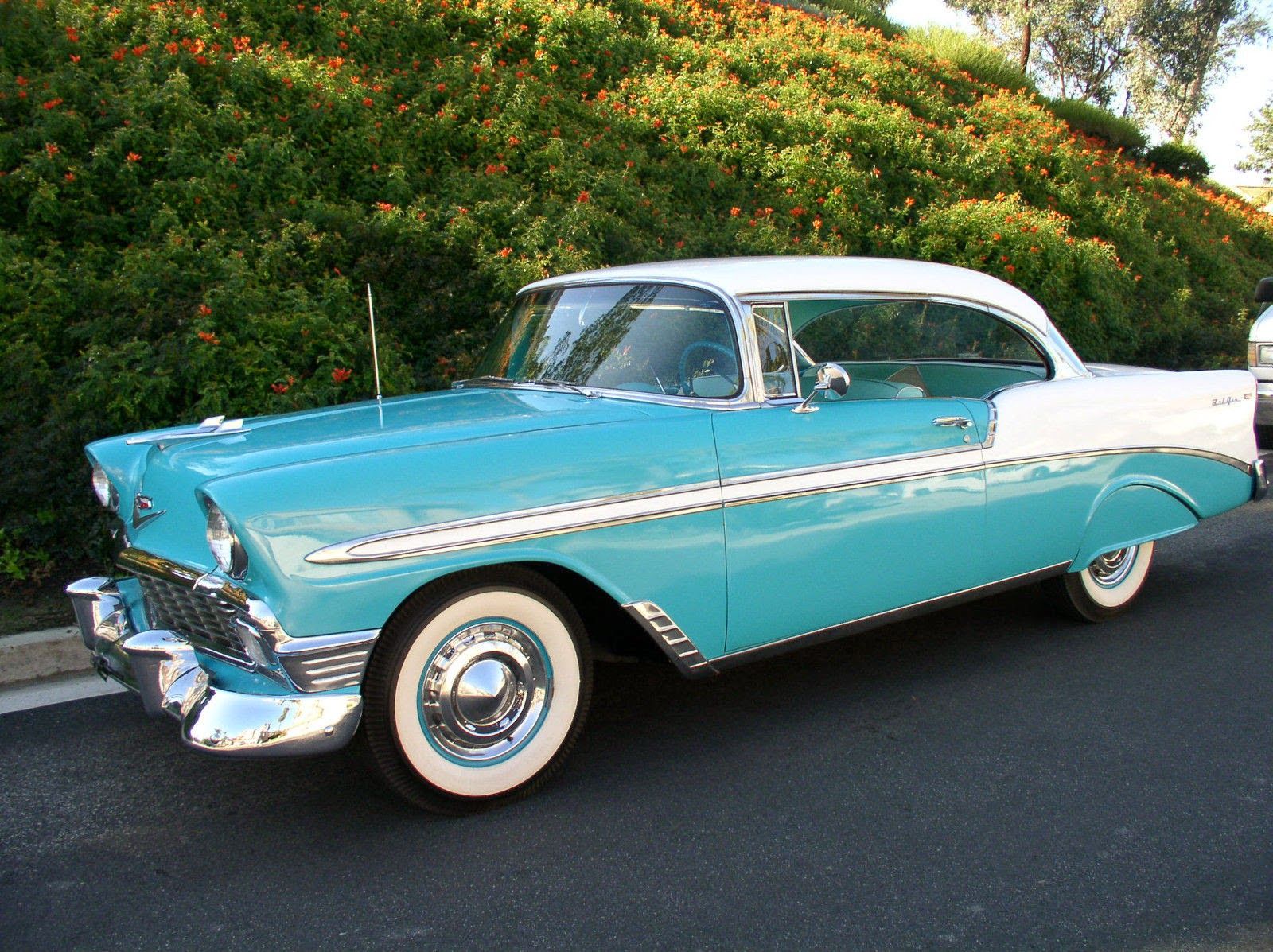
There was a time, not so long ago, when American roads were defined by the cars that drove on them. It was a glorious era of power, chrome that could blind a low-flying aircraft, and swagger that would make a rock star blush. This was when the Motor City did more than just lead the way; it was the highway, setting the pace for the automotive world.
From the post-war boom, when America put its foot down and declared its cruising intentions, right through the golden age of muscle cars where horsepower was a religion, Detroit’s automakers produced vehicles that became indelible cultural icons. These magnificent machines came roaring off assembly lines with bold styling that could stop traffic, innovative features that made jaws drop, and a distinctly American attitude that turned heads everywhere it went, capturing imaginations around the globe. Detroit truly established itself as the undisputed automotive capital of the world.
These were the cars that graced every garage calendar, rumbled ominously in drive-in movie lots, and demanded attention at every red light, daring anyone to try and beat them off the line. They were built to leave a mark, preferably a set of glorious black stripes on the asphalt. Whether it was their sleek fins that could double as landing gear, an aggressive stance ready to conquer, or simply their pure, unfiltered cool, these cars told the world that American engineering wasn’t just about practicality—it was about pride, passion, and pushing boundaries. In this piece, we’re taking a joyride back in time to look at 13 classic cars that owned Detroit’s heyday, each a testament to a bygone era of unparalleled American ingenuity and spirit.
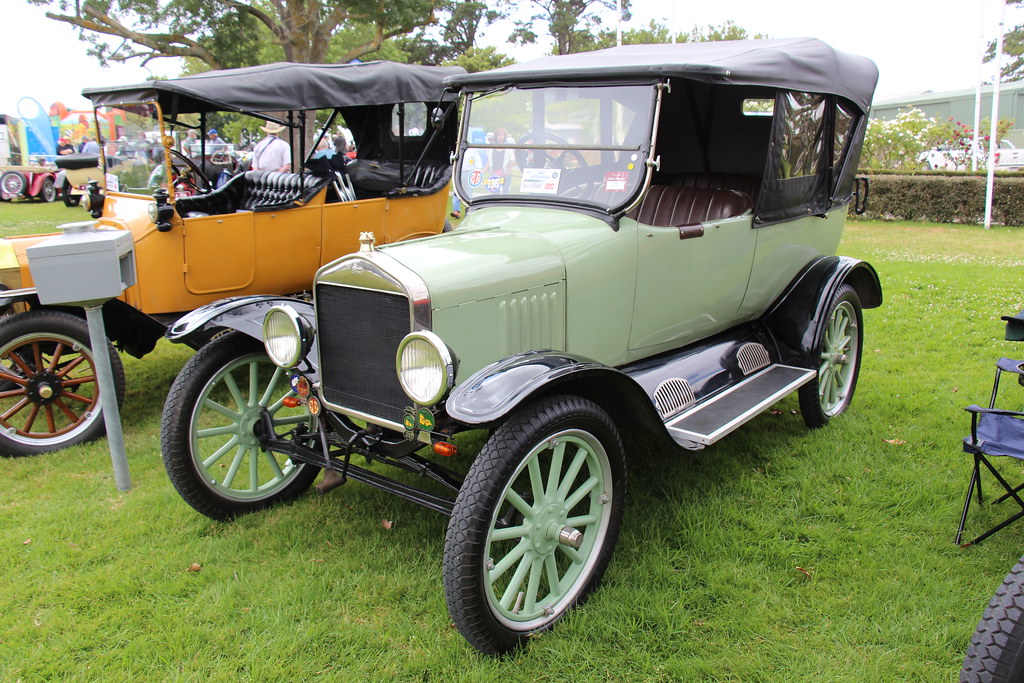
1. **Ford Model T**No discussion of American automotive dominance can begin without acknowledging the revolutionary Ford Model T. This vehicle stands as a monumental achievement, not merely as a car, but as the harbinger of personal transportation for the masses. Henry Ford’s visionary leadership led to the establishment of the Ford Motor Company in 1903, laying the groundwork for an industrial transformation.
His greatest innovation arrived in 1913 with the implementation of the moving assembly line at the Highland Park plant. This groundbreaking technique dramatically reduced the time required to build a Model T, slashing it from 12 hours to a mere 93 minutes. Such efficiency was unheard of at the time, setting a new global standard for manufacturing processes.
Beyond production, Ford’s commitment to his workforce was equally revolutionary. He shocked competitors by paying workers $5 per day—double the standard wage—a move that not only created a new middle class of workers but also ensured they could afford the very cars they built. This business model fundamentally transformed Detroit’s economy and population, drawing migrants from across America seeking well-paying manufacturing jobs.
The Model T’s affordability, priced at $850 in 1908 and remarkably dropping to $300 by 1925, put automobiles within reach of average Americans for the first time. Between 1908 and 1927, Ford produced an astonishing 15 million Model Ts, making personal transportation accessible nationwide and cementing Detroit’s rise as the global center of automobile manufacturing. The Model T was more than a car; it was a societal catalyst.
Car Model Information: 2021 Volkswagen Tiguan 2.0T SE R-Line Black
Caption: 1925 Ford Model T Touring Car
Manufacturer: Ford Motor Company
Production: October 1908 – May 1927
Assembly: collapsible list
Designer: Childe Harold Wills
Class: Economy car
BodyStyle: collapsible list
Layout: FMR layout
Engine: straight-4
Transmission: planetary gear
Wheelbase: 100.0 in
Abbr: on (1912 roadster)
Length: 134 in
Width: 1676 mm
Height: 1860 mm
Weight: convert
Predecessor: Ford Model N
Successor: Ford Model A (1927–1931)
Categories: 1900s cars, 1908 establishments in the United States, 1910s cars, 1920s cars, All articles needing additional references
Summary: The Ford Model T is an automobile that was produced by the Ford Motor Company from October 1, 1908, to May 26, 1927. It is generally regarded as the first mass-affordable automobile, which made car travel available to middle-class Americans. The relatively low price was partly the result of Ford’s efficient fabrication, including assembly line production instead of individual handcrafting. The savings from mass production allowed the price to decline from $780 in 1910 (equivalent to $26,322 in 2024) to $290 in 1924 ($5,321 in 2024 dollars). It was mainly designed by three engineers, Joseph A. Galamb (the main engineer), Eugene Farkas, and Childe Harold Wills. The Model T was colloquially known as the “Tin Lizzie”.
The Ford Model T was named the most influential car of the 20th century in the 1999 Car of the Century competition, ahead of the BMC Mini, Citroën DS, and Volkswagen Beetle. Ford’s Model T was successful not only because it provided inexpensive transportation on a massive scale, but also because the car signified innovation for the rising middle class and became a powerful symbol of the United States’ age of modernization. With over 15 million sold, it was the most sold car in history before being surpassed by the Volkswagen Beetle in 1972.
Get more information about: Ford Model T
Buying a high-performing used car >>>
Brand: Ford Model: Model T
Price: $16,773 Mileage: 68,625 mi.
Read more about: Driving Through History: 10 Stylish and Iconic Cars That Defined the Electrifying 1960s Automotive Landscape
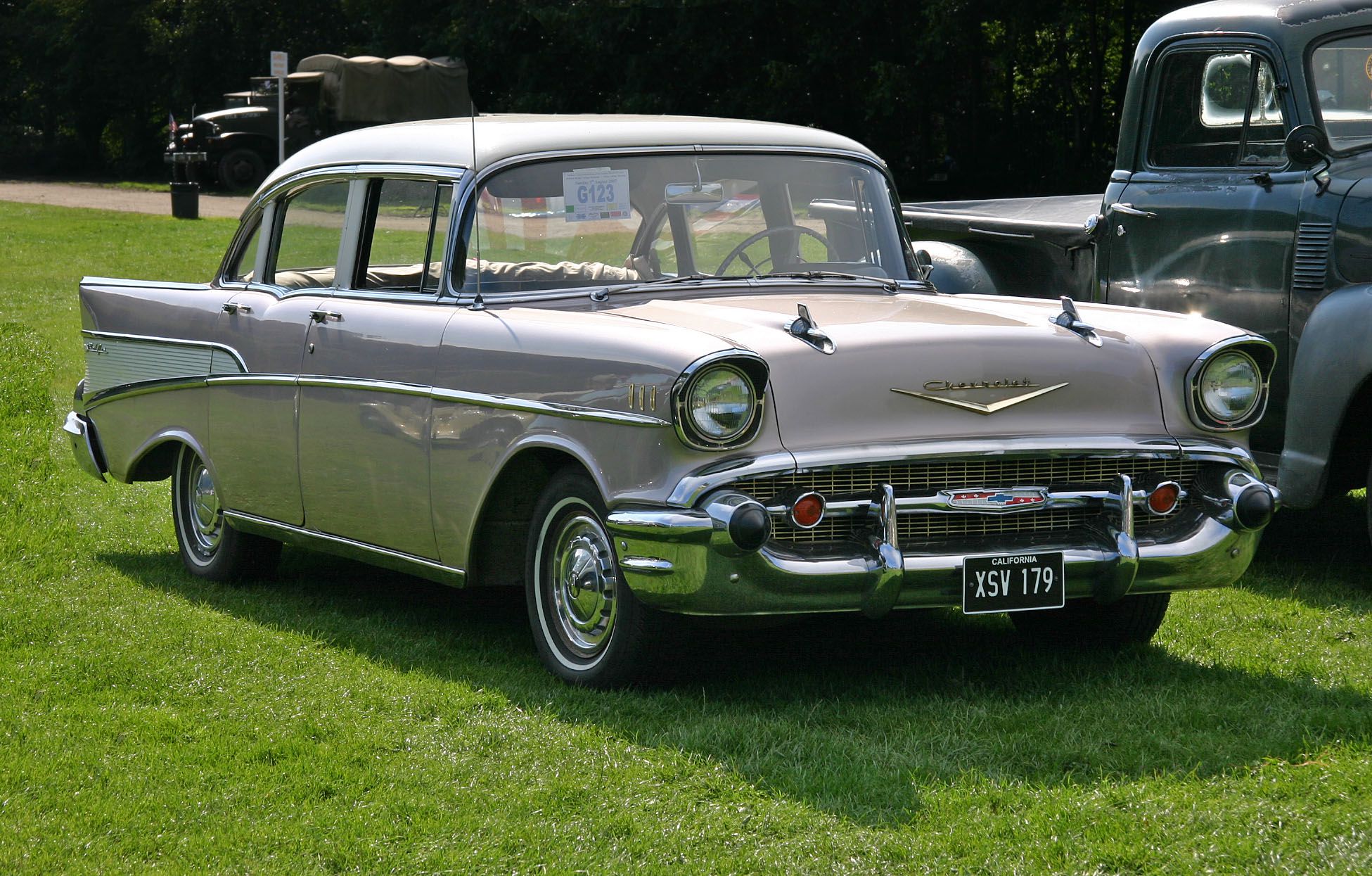
2. **1957 Chevrolet Bel Air**Few cars encapsulate the spirit of “1950s Americana” quite as vividly as the 1957 Chevrolet Bel Air. This iconic vehicle is a rolling time capsule, perfectly embodying the decade’s flamboyant, space-obsessed style that reflected a nation brimming with post-war optimism and prosperity. Its design language spoke volumes about the era’s confidence and forward-looking vision.
With its pronounced tailfins, seemingly ready for liftoff, the Bel Air commanded attention. It featured enough chrome trim to reflect the sun in dazzling displays, and an unmistakable grille that presented a wide, inviting smile. These distinctive elements combined to create an instant icon, making the Bel Air recognizable even from a distance, a true testament to its exuberant design philosophy.
This car wasn’t just about stunning looks; it possessed an undeniable presence that resonated deeply with the American public. The Bel Air was remarkably stylish yet remained accessible, finding favor with a diverse range of buyers. It became a beloved fixture for families embarking on Sunday picnics, and equally, for rebellious teens cruising the local drive-in, cementing its place in the fabric of everyday American life.
The 1957 Chevrolet Bel Air, with its distinctive fins and chrome details, truly epitomized the era’s exuberant design philosophy. It transcended mere transportation to become a cultural statement, a symbol of freedom and aspirational living that continues to evoke nostalgia and admiration, solidifying its legendary status in automotive history.
Car Model Information: 2021 Volkswagen Tiguan 2.0T SE R-Line Black
Name: Chevrolet Bel Air
Caption: 1957 Chevrolet Bel Air convertible
Manufacturer: Chevrolet
Production: 1949–1980
ModelYears: 1950–1981
Class: Full-size
Layout: FR layout
Predecessor: Chevrolet Fleetline,Chevrolet Biscayne
Successor: Chevrolet Impala
Categories: 1950s cars, 1960s cars, 1970s cars, 1980s cars, Articles with short description
Summary: The Chevrolet Bel Air is a full-size car produced by Chevrolet for the 1950–1981 model years. Initially, only the two-door hardtops in the Chevrolet model range were designated with the Bel Air name from 1950 to 1952. With the 1953 model year, the Bel Air name was changed from a designation for a unique body shape to a premium level of trim applied across a number of body styles. The Bel Air continued with various other trim level designations, and it had gone from a mid-level trim car to a budget fleet sedan when U.S. production ceased in 1975. Production continued in Canada, for its home market only, through the 1981 model year.
Get more information about: Chevrolet Bel Air
Buying a high-performing used car >>>
Brand: Chevrolet Model: Bel Air
Price: $16,773 Mileage: 68,625 mi.
Read more about: Detroit’s Golden Age: 12 Classic American Cars That Ruled the Roads and Made a Nation Proud
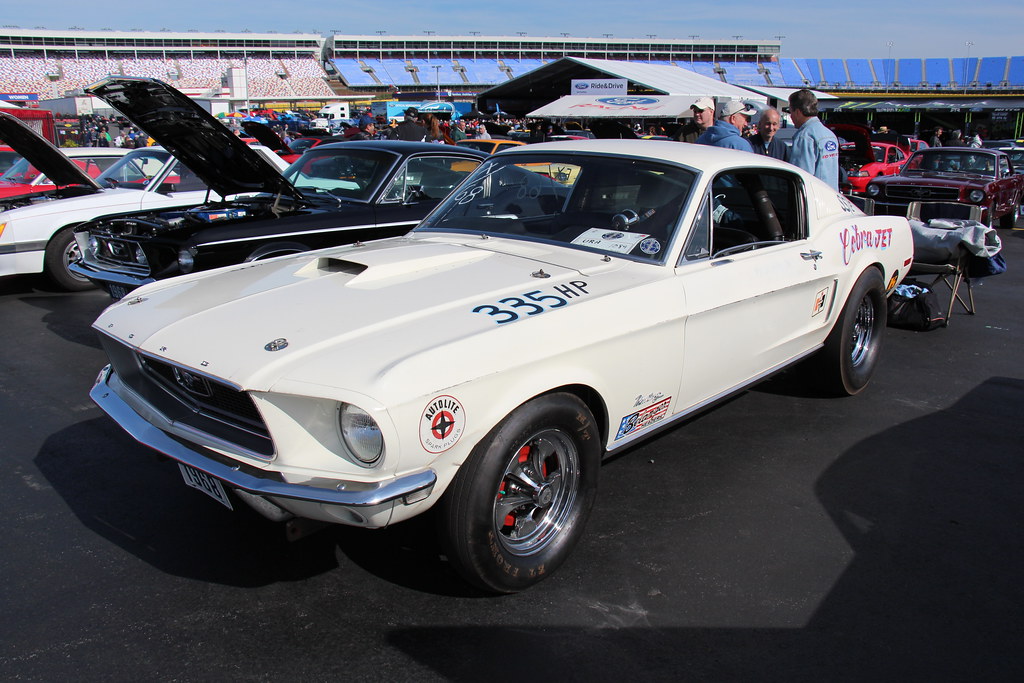
3. **Ford Mustang (Early Generations)**The Ford Mustang burst onto the scene, quickly establishing itself as a true American classic that profoundly redefined the automotive landscape. From its inception, this car represented more than just a mode of transport; it embodied the very essence of freedom and exhilarating performance, instantly captivating the hearts of a generation. Its impact was immediate and enduring, setting a new benchmark for accessible sportiness.
With its powerful engine options and sleek, undeniably attractive design, the Mustang effortlessly captured attention on the road. It possessed an aggressive yet refined stance that promised excitement and individuality, appealing to drivers who sought a vehicle that reflected their personality. This unique blend of aesthetics and potency contributed significantly to its widespread adoration and market success.
Beyond its mechanical prowess and stylish facade, the Mustang quickly transcended its role as a mere car to become a potent cultural icon. It joined the ranks of other legendary muscle cars like Camaros and Chargers, representing power, freedom, and individuality for a burgeoning youth culture. Its allure was universal, appealing to car lovers everywhere who sought a dynamic driving experience.
Throughout its rich history, the early generations of the Mustang played a pivotal role in shaping American car culture. It didn’t just appeal to a segment of enthusiasts; it created a phenomenon. This iconic model inspired countless imitators and solidified Ford’s reputation for producing vehicles that resonated deeply with the American dream, proving its enduring legacy and making America proud.
Car Model Information: 1966 Ford Mustang Base
Name: Ford Mustang
Caption: 2024 Ford Mustang GT
Aka: Ford T5 (Germany)
Manufacturer: Ford Motor Company
Production: March 1964 – present
ModelYears: 1965–present
Class: Unbulleted list
BodyStyle: Unbulleted list
Layout: Front-engine, rear-wheel-drive layout
Categories: 1970s cars, 1980s cars, 1990s cars, 2+2 coupés, 2000s cars
Summary: The Ford Mustang is an American automobiles manufactured and marketed by Ford since 1964, as Ford’s longest nameplate in continuous production. Currently in its seventh generation, it is the fifth-best selling Ford car nameplate. The namesake of the “pony car” automobile segment, the Mustang was developed as a highly styled line of sporty coupes and convertibles derived from existing model lines, initially distinguished by its pronounced “long hood, short deck” proportions.
Originally predicted to sell 100,000 vehicles yearly, the 1965 Mustang became the most successful vehicle launch since the 1927 Model A. Introduced on April 17, 1964 (16 days after the Plymouth Barracuda), over 400,000 units were sold in its first year; the one-millionth Mustang was sold within two years of its launch. In August 2018, Ford produced the 10-millionth Mustang; matching the first 1965 Mustang, the vehicle was a 2019 Wimbledon White convertible with a V8 engine.
The success of the Mustang launch led to multiple competitors from other American manufacturers, including the Chevrolet Camaro and Pontiac Firebird (1967), AMC Javelin (1968), and Dodge Challenger (1970). It also competed with the Plymouth Barracuda, which was launched around the same time. The Mustang also had an effect on designs of coupes worldwide, leading to the marketing of the Toyota Celica and Ford Capri in the United States (the latter, by Lincoln-Mercury). The Mercury Cougar was launched in 1967 as a unique-bodied higher-trim alternative to the Mustang; during the 1970s, it included more features and was marketed as a personal luxury car.
From 1965 until 2004, the Mustang shared chassis commonality with other Ford model lines, staying rear-wheel-drive throughout its production. From 1965 to 1973, the Mustang was derived from the 1960 Ford Falcon compact. From 1974 until 1978, the Mustang (denoted Mustang II) was a longer-wheelbase version of the Ford Pinto. From 1979 until 2004, the Mustang shared its Fox platform chassis with 14 other Ford vehicles (becoming the final one to use the Fox architecture). Since 2005, Ford has produced two generations of the Mustang, each using a distinct platform unique to the model line.
Through its production, multiple nameplates have been associated with the Ford Mustang series, including GT, Mach 1, Boss 302/429, Cobra (separate from Shelby Cobra), and Bullitt, along with “5.0” fender badging (denoting 4.9 L OHV or 5.0 L DOHC V8 engines).
Get more information about: Ford Mustang
Buying a high-performing used car >>>
Brand: Ford Model: Mustang
Price: $32,991 Mileage: 98,811 mi.

4. **Chevrolet Corvette (Early Generations)**Referred to universally as “America’s Sports Car,” the Chevrolet Corvette has carved out an unrivaled niche in automotive history, symbolizing high-performance innovation and aspirational design. Its debut marked General Motors’ bold foray into the sports car market, demonstrating Detroit’s capability to compete with—and often surpass—European legends in style and speed.
The early generations of the Corvette were instantly recognizable for their stunning looks, a design philosophy that combined elegance with an undeniable sense of athleticism. This aesthetic, coupled with impressive speed, made each model unique and highly desirable. It was a car designed not just for transport, but for exhilarating experiences, turning every drive into an event.
What truly set the Corvette apart was its meticulous blend of luxury with high performance. It offered an intoxicating mix of refined interiors and powerful engines, delivering an experience that was both comfortable and thrilling. This dual appeal established the Corvette as a leader, proving that American engineering could master both sophisticated comfort and raw, unadulterated power.
For decades, the Chevrolet Corvette has stood as a steadfast symbol of innovation in the automotive world, continually pushing the boundaries of design and engineering. Its enduring presence has inspired generations of enthusiasts and cemented its status as a quintessential American icon, proudly representing Detroit’s commitment to automotive excellence and proving that America could produce a world-class sports car.
Car Model Information: 2004 Chevrolet Corvette Base
Name: Chevrolet Corvette
Caption: 2021 Chevrolet Corvette C8
Manufacturer: Chevrolet
Production: 1953–present
ModelYears: bulleted list
Assembly: bulleted list
Class: Sports car
BodyStyle: coupé
Layout: Front-engine, rear-wheel-drive layout,Rear mid-engine, rear-wheel-drive layout
Categories: 1950s cars, 1960s cars, 1970s cars, 1980s cars, 1990s cars
Summary: The Chevrolet Corvette is a line of American two-door, two-seater sports cars manufactured and marketed by General Motors under the Chevrolet marque since 1953. Throughout eight generations, indicated sequentially as C1 to C8, the Corvette is noted for its performance, distinctive styling, lightweight fiberglass or composite bodywork, and competitive pricing. The Corvette has had domestic mass-produced two-seater competitors fielded by American Motors, Ford, and Chrysler; it is the only one continuously produced by a United States auto manufacturer. It serves as Chevrolet’s halo car.
In 1953, GM executives accepted a suggestion by Myron Scott, then the assistant director of the Public Relations department, to name the company’s new sports car after the corvette, a small, maneuverable warship. Initially, a relatively modest, lightweight 6‑cylinder convertible, subsequent introductions of V8 engines, competitive chassis innovations, and rear mid-engined layout have gradually moved the Corvette upmarket into the supercar class. In 1963, the second generation was introduced in coupe and convertible styles. The first three Corvette generations (1953–1982) employed body-on-frame construction, and since the C4 generation, introduced in 1983 as an early 1984 model, Corvettes have used GM’s unibody Y‑body platform. All Corvettes used front mid-engine configuration for seven generations, through 2019, and transitioned to a rear mid-engined layout with the C8 generation.
Initially manufactured in Flint, Michigan, and St. Louis, Missouri, the Corvette has been produced in Bowling Green, Kentucky, since 1981, which is also the location of the National Corvette Museum. The Corvette has become widely known as “America’s Sports Car.” Automotive News wrote that after being featured in the early 1960s television show Route 66, “the Corvette became synonymous with freedom and adventure,” ultimately becoming both “the most successful concept car in history and the most popular sports car in history.”
Get more information about: Chevrolet Corvette
Buying a high-performing used car >>>
Brand: Chevrolet Model: Corvette
Price: $23,498 Mileage: 29,579 mi.

5. **Pontiac GTO (1964)**The automotive landscape of America underwent a seismic shift with the debut of the 1964 Pontiac GTO, a car often credited with pioneering an entirely new segment: the true muscle car. This wasn’t merely a new model; it was a declaration, signaling a profound change in consumer desire towards vehicles that emphasized raw power and an undeniable street presence.
Upon its introduction, the GTO ignited a fierce and exhilarating competition among manufacturers. This newfound rivalry spurred Detroit’s automakers to produce increasingly powerful street-legal vehicles, pushing the boundaries of engineering and performance. The GTO effectively set the standard, forcing rivals to adapt or be left behind in the burgeoning muscle car wars.
The 1964 GTO wasn’t just powerful; it was aggressively styled, featuring bold lines and a commanding stance that screamed performance. It appealed directly to a generation eager for a car that offered exhilarating speed and a distinctive, rebellious image. Its arrival marked a cultural moment, establishing a new category of performance cars that quickly captured the public’s imagination.
With its powerful engine and unapologetic attitude, the Pontiac GTO cemented its legendary status almost immediately. It became the benchmark for a new era of American automotive prowess, where horsepower was king and the rumble of a V8 was music to the ears. This car stands as a testament to Detroit’s innovative spirit, forever changing the roads and the driving experience across the nation.
Car Model Information: 1966 Pontiac GTO Coupe
Name: Pontiac GTO
Caption: 2005 Pontiac GTO
Manufacturer: Pontiac (automobile),Holden
Class: Mid-size car,Compact car,Mid-size car
Production: 1963–1974,2003–2006
Predecessor: Pontiac Tempest
Layout: Front-engine, rear-wheel-drive layout
ModelYears: 1964-1974 2004-2006
Categories: 1970s cars, 2000s cars, All articles with unsourced statements, Articles with short description, Articles with unsourced statements from October 2008
Summary: The Pontiac GTO is a front-engine, rear-drive, two-door, and four-passenger automobile manufactured and marketed by the Pontiac division of General Motors over four generations from 1963 until 1974 in the United States — with a fifth generation made by GM’s Australian subsidiary, Holden, for the 2004 through 2006 model years.
The first generation of the GTO is credited with popularizing the muscle car market segment in the 1960s. Some consider the Pontiac GTO to have started the trend with all four domestic automakers offering a variety of competing models.
For the 1964 and 1965 model years, the GTO was an optional package on the intermediate-sized Pontiac LeMans. The 1964 GTO vehicle identification number (VIN) started with 22, while the 1965 GTO VIN began with 237. The GTO was designated as a separate Pontiac model from 1966 through 1971 (VIN 242…). It became an optional package again for the 1972 and 1973 intermediate LeMans. For 1974, the GTO was an optional trim package on the compact-sized Ventura.
The GTO model was revived for the 2004 through 2006 model years as a captive import for Pontiac, a left-hand drive version of the Holden Monaro, itself a coupé variant of the Holden Commodore.
Get more information about: Pontiac GTO
Buying a high-performing used car >>>
Brand: Pontiac Model: GTO
Price: $59,991 Mileage: 4,408 mi.
Read more about: The Golden Era Revisited: Unveiling 15 of the Most Stylish Cars from the 1960s
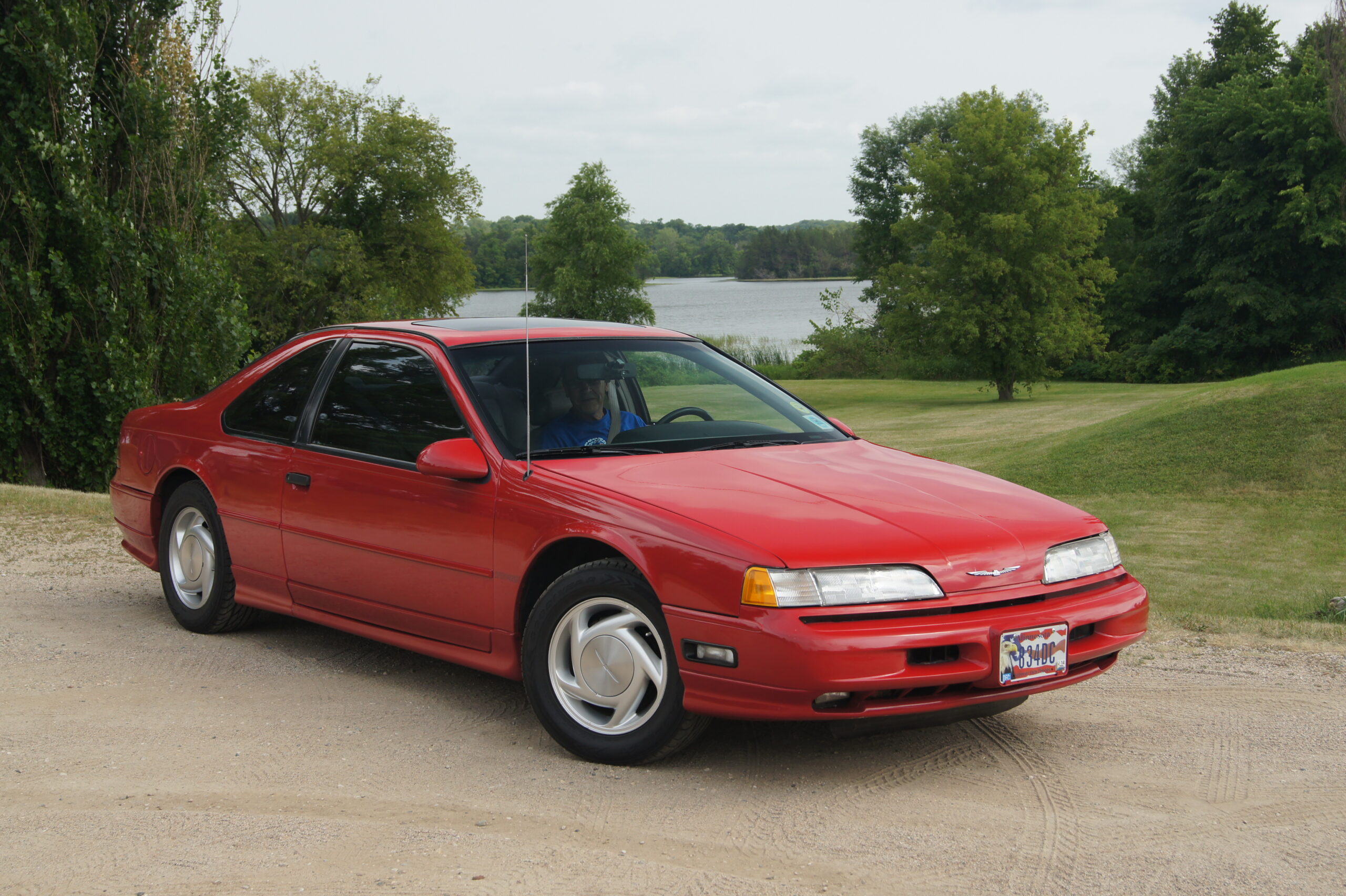
6. **Ford Thunderbird**Ford responded to the evolving desires of the American public with the introduction of the elegant Thunderbird, a car that quickly captured the nation’s imagination through its unique blend of style and sophistication. It was not merely a vehicle; it was a statement of refined taste and personal luxury, setting itself apart from the more utilitarian offerings of the era.
The Thunderbird embarked on a significant evolution, transforming from its initial guise as a two-seater sports car into a more spacious and luxurious personal vehicle. This strategic shift showcased Ford’s adaptability and keen understanding of consumer preferences, recognizing a growing demand for cars that offered both spirited performance and upscale comfort, a critical insight for the automotive market.
This successful evolution proved a vital point: Americans desired more than just raw power or basic transportation. The Thunderbird’s popularity unequivocally demonstrated that consumers wanted both performance and comfort, encapsulated in a beautifully designed package. It offered an aspirational lifestyle, making every journey feel like a special occasion.
As a result, the Ford Thunderbird carved out a significant niche in the burgeoning personal luxury car segment. It represented Detroit’s capability to innovate beyond the pure performance realm, providing a sophisticated and comfortable driving experience. The Thunderbird remains a cherished icon, reflecting an era when American automakers excelled at blending beauty, power, and elegance into a single, captivating machine.
Car Model Information: 2003 Ford Thunderbird
Name: Ford Thunderbird
Caption: 1957 Thunderbird
Manufacturer: Ford Motor Company
Production: unbulleted list
ModelYears: unbulleted list
Class: unbulleted list
Layout: Front-engine, rear-wheel drive layout
Categories: 1960s cars, 1970s cars, 1980s cars, 1990s cars, 2000s cars
Summary: The Ford Thunderbird is a personal luxury car manufactured and marketed by Ford Motor Company for model years 1955 to 2005, with a hiatus from 1998 to 2001.
Ultimately gaining a broadly used colloquial nickname, the T-Bird, the model was introduced as a two-seat convertible, subsequently offered variously in a host of body styles including as a four-seat hardtop coupe, four-seat convertible, five-seat convertible and hardtop, four-door pillared hardtop sedan, six-passenger hardtop coupe, and five-passenger pillared coupe, before returning in its final generation, again as a two-seat convertible.
At its inception, Ford targeted the two-seat Thunderbird as an upscale model. The 1958 model year design introduced a rear seat and arguably marked the expansion of a market segment that came to be known as personal luxury cars, positioned to emphasize comfort and convenience over handling and high-speed performance.
Get more information about: Ford Thunderbird
Buying a high-performing used car >>>
Brand: Ford Model: Thunderbird
Price: $14,600 Mileage: 49,430 mi.
Read more about: Detroit’s Golden Age: 12 Classic American Cars That Ruled the Roads and Made a Nation Proud
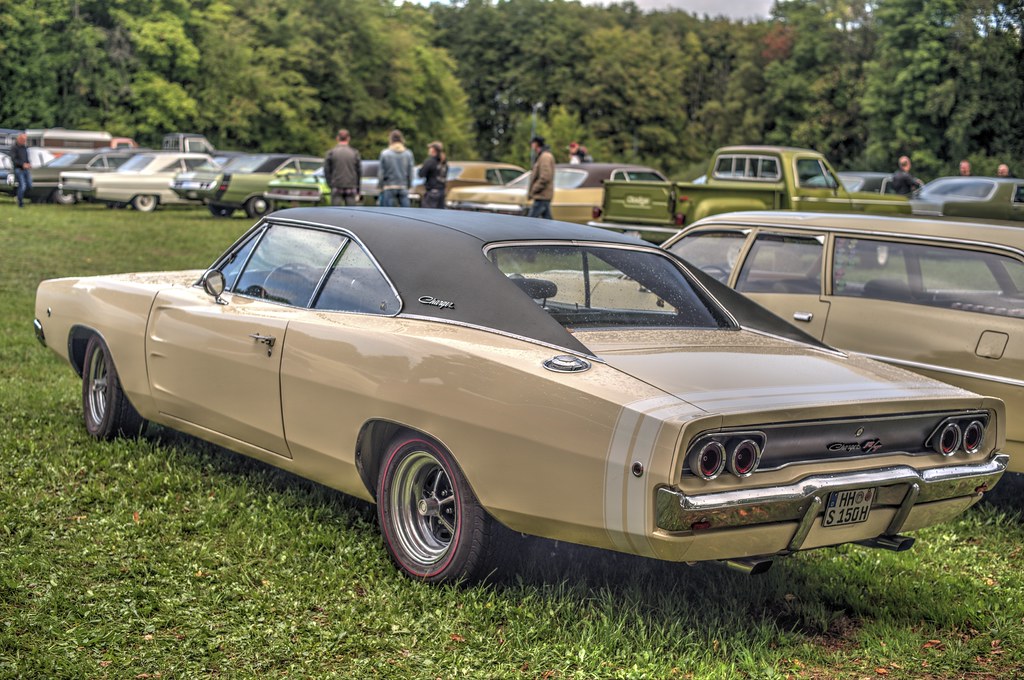
7. **Dodge Charger**As the 1960s roared on, ushering in an era of unprecedented automotive power, the Dodge Charger burst onto the scene, quickly establishing itself as a quintessential muscle car that fully embodied Detroit’s relentless pursuit of performance and audacious style. It was more than just a car; it was a statement, a rumbling testament to American engineering and a symbol of raw, untamed power that captured the imagination of a generation eager for excitement on the open road. The Charger’s aggressive lines and formidable presence quickly cemented its place in the pantheon of automotive legends.
This iconic vehicle became a potent cultural icon, joining the ranks of other legendary muscle cars like Camaros and Mustangs. Its distinctive fastback design and powerful engine options ensured it commanded attention, whether tearing down a drag strip or simply cruising through town. The Charger represented power, freedom, and individuality, resonating deeply with a burgeoning youth culture that sought vehicles reflecting their dynamic and rebellious spirit. It was a machine designed to be noticed and revered.
Detroit’s ability to create such powerful street-legal vehicles during this period solidified its reputation as the global center of automotive innovation. The Charger, with its unapologetic attitude and thundering V8, showcased the zenith of American design and performance. It proved that the Motor City wasn’t just building cars; it was crafting dreams, vehicles that promised thrilling experiences and an unmistakable sense of American pride, setting a high benchmark for performance cars worldwide.
Car Model Information: 2022 Dodge Charger SXT
Name: Dodge Charger
Caption: 1969 Dodge Charger
Manufacturer: Dodge
Production: 1966–1978,1981–1987,2005–present
ModelYears: 1966–1978,1982–1987,2006–present
Categories: 1960s cars, 1970s cars, 1980s cars, 2000s cars, 2010s cars
Summary: The Dodge Charger is a model of automobile marketed by Dodge in various forms over eight generations since 1966.
The first Charger was a show car in 1964. A 1965 Charger II concept car resembled the 1966 production version.
In the United States, the Charger nameplate has been used on mid-size cars, personal luxury coupes, subcompact hatchbacks, and full-size sedans.
Get more information about: Dodge Charger
Buying a high-performing used car >>>
Brand: Dodge Model: Charger
Price: $20,899 Mileage: 37,151 mi.
Read more about: Roaring Engines and Timeless Tales: Our Favorite Muscle Car Memories That Will Burn Out In Your Brain!
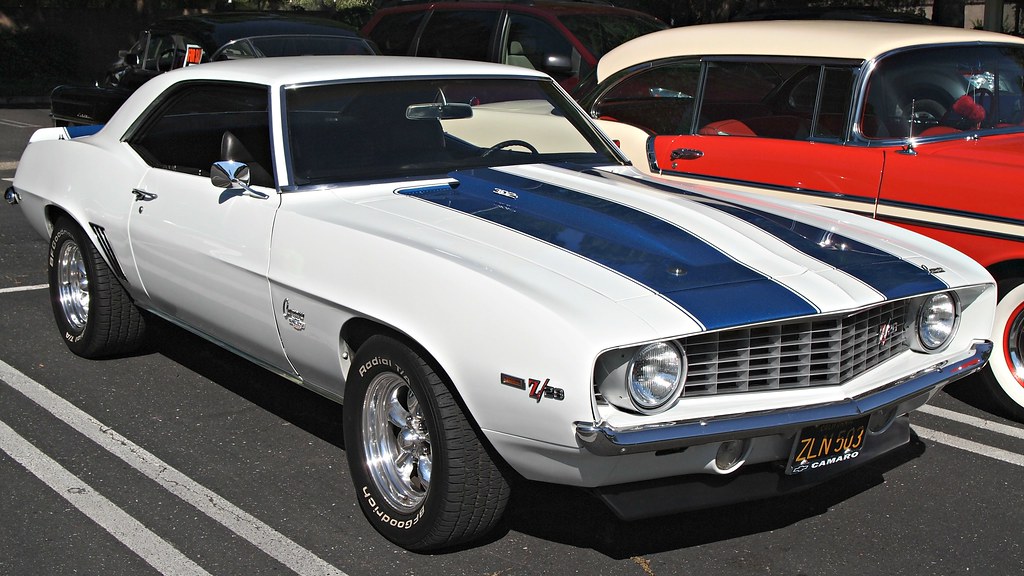
8. **Chevrolet Camaro**Born from the fierce competitive spirit that defined Detroit’s golden era, the Chevrolet Camaro emerged as another titan of the muscle car segment, directly challenging its rivals with a blend of aggressive styling and exhilarating performance. Its introduction was a declaration of intent from General Motors, a response designed to carve out its own substantial slice of the burgeoning youth market hungry for powerful, stylish, and accessible sports cars. The Camaro quickly became an enduring symbol of American automotive prowess.
Like its counterparts, the Camaro transcended mere transportation, transforming into a cultural icon that resonated deeply with drivers seeking to express their individuality and embrace the thrill of the open road. With its powerful engine options and sleek, undeniably attractive design, the Camaro effortlessly captured attention. It possessed an aggressive yet refined stance that promised excitement, appealing to those who sought a vehicle that mirrored their adventurous spirit and dynamic lifestyle.
Detroit’s designers and engineers worked in tandem, pushing the boundaries of what was possible in street-legal performance. The Camaro exemplified this collaborative effort, showcasing the city’s commitment to innovation and design advancements. Its widespread adoration and market success proved that General Motors could produce a vehicle that not only performed exceptionally but also captured the very essence of American freedom and automotive passion, making it a beloved classic that continues to inspire enthusiasts.
Car Model Information: 2018 Chevrolet Camaro 1LS
Name: Chevrolet Camaro
Manufacturer: Chevrolet
Production: 1966–2002,2009–2023
ModelYears: 1967–2002,2010–2024
Class: Pony car
BodyStyle: coupe,convertible
Platform: GM F platform,GM Zeta platform,GM Alpha platform
Layout: Front-engine, rear-wheel-drive layout
Categories: 1970s cars, 1980s cars, 1990s cars, 2+2 coupés, 2000s cars
Summary: The Chevrolet Camaro is a mid-size American automobile manufactured by Chevrolet, classified as a pony car. It first went on sale on September 29, 1966, for the 1967 model year and was designed to compete with the Ford Mustang. The Camaro shared its platform and major components with the Firebird, produced by General Motors’ Pontiac division that was also introduced for the 1967 model year.
Four distinct generations of the Camaro were developed before production ended in 2002. The nameplate was revived on a concept car that evolved into the fifth-generation Camaro; production started on March 16, 2009.
Production of the sixth generation of the Camaro ended in December 2023, for the 2024 model year.
Get more information about: Chevrolet Camaro
Buying a high-performing used car >>>
Brand: Chevrolet Model: Camaro
Price: $19,125 Mileage: 69,196 mi.
Read more about: Roaring Engines and Timeless Tales: Our Favorite Muscle Car Memories That Will Burn Out In Your Brain!
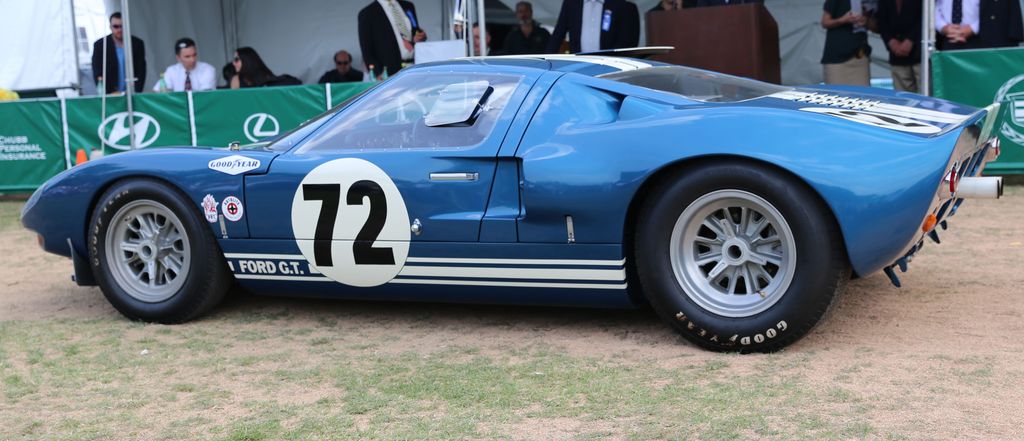
9. **Ford GT40**While many Detroit classics dominated the streets, the Ford GT40 set its sights on global racing supremacy, achieving what many thought impossible and forever etching its name in automotive history. Its legendary victory at Le Mans in 1966 was not just a win; it was a profound symbol of American automotive excellence on the world stage, a testament to Detroit’s engineering might and unwavering determination. This racing legend demonstrated that American innovation could conquer even the most formidable European competition.
Innovations first developed for the racetrack, such as improved suspension systems and more efficient engines, quickly found their way into production vehicles, demonstrating the direct influence of racing on everyday automotive advancements. The GT40 was a culmination of intense focus on performance, aerodynamics, and brute power, designed specifically to outclass its rivals on the world’s most demanding circuits. Its success was a source of immense pride for American engineering and design capabilities.
The international racing triumphs of the Ford GT40 boosted American confidence in domestic engineering and design capabilities, proving that Detroit could compete—and win—against the best the world had to offer. It reinforced the “Win on Sunday, sell on Monday” philosophy, showcasing how racing success could fuel consumer enthusiasm and solidify a brand’s reputation for cutting-edge technology and unstoppable performance. The GT40 remains a celebrated icon, representing a pinnacle of American ambition and ingenuity.
Car Model Information: 1966 Ford GT40
Name: Ford GT40
Caption: Ford GT40 Mk.I in JWA Gulf Oil racing colors
Manufacturer: Ford Advanced Vehicles,John Wyer,Kar Kraft,Holman-Moody,Shelby American
Production: 1964–1969
Assembly: Slough,Los Angeles
Designer: Ron Bradshaw
Class: Group 4 (racing),Group 5 (racing),Group 6 (racing)
BodyStyle: coupé
Layout: MR layout
Engine: Cubic inch,289 CID (4737 cc) V-8,302 CID (4942 cc) V-8,427 CID (6997 cc) V-8
Transmission: Manual transmission
Wheelbase: 95 in
Abbr: on
Length: 160 in
Width: 70 in
Height: 40.5 in
Weight: convert
Successor: Ford P68
Sp: uk
Categories: 24 Hours of Le Mans race cars, All Wikipedia articles needing clarification, All articles needing additional references, All articles that may contain original research, All articles with specifically marked weasel-worded phrases
Summary: The Ford GT40 is a high-performance mid-engined racing car originally designed and built for and by the Ford Motor Company to compete in 1960s European endurance racing and the World Sportscar Championship. Its specific impetus was to beat Scuderia Ferrari, which had won the prestigious 24 Hours of Le Mans race for six years running from 1960 to 1965. As rules of the time required that GT cars were built in dozens and sold, around 100 cars in total have been made, mostly as 289 cu in (4.7 L) V8-powered Mk Is, of which at least 50 were made in 1965, which allowed FIA-homologation as Group-4-Sportscar for 1966 until 1971. This gave the old MK.I car of Gulf-Wyer the chance to enter and win Le Mans in 1968 and 1969 after prototypes had been limited to 3 litre, with the performance of the Ford 7-litre-V8 in the factory 1966 Mk.II and 1967 Mk.IV prototypes causing this rule change, which also banned the 4-litre V12 Ferrari 330P4 and others after 1967. The Mk.III designation was used for some road-legal cars.
The Ford GT40 debuted in 1964, and improvements in 1965 led to Ford winning World Championships categories from 1966 to 1968. The first Le Mans win came in 1966 with three 427 cu in (7.0 L) powered Mk.II prototypes crossing the finish line together, the second in 1967 with the same engine now in quite different US-built Mk.IV prototype chassis similar to the “J-car” mule. In order to lower ever-higher race top speeds, a rule change from 1968 onwards limited prototypes to 3.0 litre Formula 1 engines; the sportscar “loophole”, however, allowed the private JW “Gulf Oil” team to win at Le Mans in 1968 and 1969 running a Mk.I with a 5.0 litre engine.
The GT40 effort began in Britain in the early 1960s when Ford Advanced Vehicles began to build the Mk I, based upon the British Lola Mk6, in Slough, UK. After disappointing race results, the engineering team was moved in 1964 to Dearborn, Michigan, US, to design and build cars by its advanced developer, Kar Kraft. All chassis versions were powered by a series of American-built Ford V8 OHV engines modified for racing.
In the 1966 Le Mans, the GT40 Mk II car broke Ferrari’s winning streak, making Ford the first American manufacturer to win a major European race since Jimmy Murphy’s Duesenberg in the 1921 French Grand Prix. In the 1967 Le Mans, the GT40 Mk IV car became the only car developed and assembled entirely (both chassis and engine) in the United States to achieve the overall win at Le Mans.
Get more information about: Ford GT40
Buying a high-performing used car >>>
Brand: Ford Model: GT40
Price: $110,000 Mileage: 13,350 mi.
Read more about: Driving Through History: 10 Stylish and Iconic Cars That Defined the Electrifying 1960s Automotive Landscape
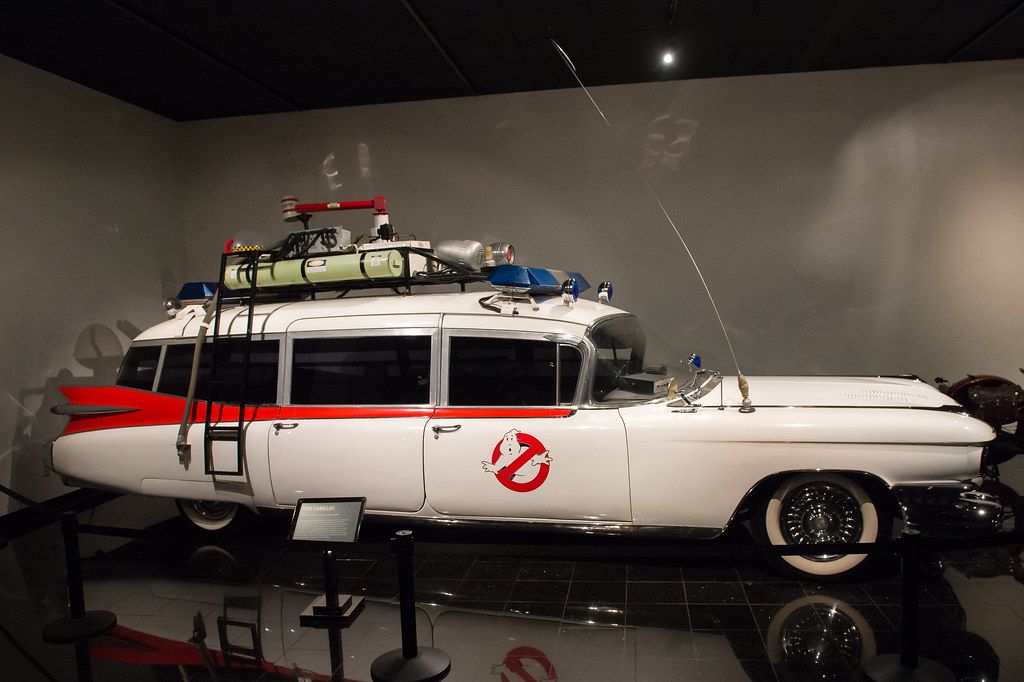
10. **1959 Cadillac**Steering back to the opulent expressions of American style, the 1959 Cadillac stands as a monumental testament to Detroit’s flamboyant design era, pushing the boundaries of automotive aesthetics to their most extreme and unforgettable. Cadillac, under the influential designs of Harley Earl, became synonymous with the “fin revolution,” with each year bringing bolder and more dramatic styling. The 1959 model, in particular, saw tailfins reach their most expressive, towering majestically and becoming an instant, unmistakable symbol of 1950s American exuberance.
These weren’t just vehicles; they were rolling sculptures that embodied the optimism and technological fascination of post-war America. The 1959 Cadillac featured not only its iconic, towering tailfins but also abundant chrome trim, massive bumpers, and distinctive styling that commanded attention. Such design elements reflected a nation brimming with prosperity and technological advancement, daring to be as visually striking as possible. It was a car that didn’t just transport; it made a grand entrance, reflecting the very spirit of the era.
Cadillac’s commitment to pushing design boundaries during this period cemented its role in shaping American car culture. The distinctive lines, chrome details, and bold styling of these automobiles captured the nation’s imagination, transforming cars from basic transportation into cultural symbols. The 1959 Cadillac, with its unforgettable silhouette, remains a highly sought-after collector’s item and a potent reminder of Detroit’s golden age of design brilliance, where beauty, power, and audacity converged.
Car Model Information: 2021 Volkswagen Tiguan 2.0T SE R-Line Black
Name: Cadillac DeVille
Caption: 2004 Cadillac DeVille DHS
Manufacturer: Cadillac
Production: 1958–2005
ModelYears: 1959–2005
Class: luxury car
Layout: FR layout
Predecessor: Cadillac Series 62
Successor: Cadillac DTS
Categories: 1950s cars, 1960s cars, 1970s cars, 1980s cars, 1990s cars
Summary: The Cadillac DeVille is a model name used by Cadillac over eight generations, originally to designate a trim level of the 1949 Cadillac Series 62 and later for a standalone model in the brand range. The last model marketed specifically as a DeVille was the 2005 full-size sedan, at the time, Cadillac’s largest model.
For 2006, the DeVille nameplate was retired, when the model line was carried forward (with minor revisions) as the Cadillac DTS, using a nomenclature adopted by the Cadillac STS and CTS.
Get more information about: Cadillac de Ville series
Buying a high-performing used car >>>
Brand: Cadillac Model: 1959 Cadillac
Price: $16,773 Mileage: 68,625 mi.
Read more about: Detroit’s Golden Age: 12 Classic American Cars That Ruled the Roads and Made a Nation Proud
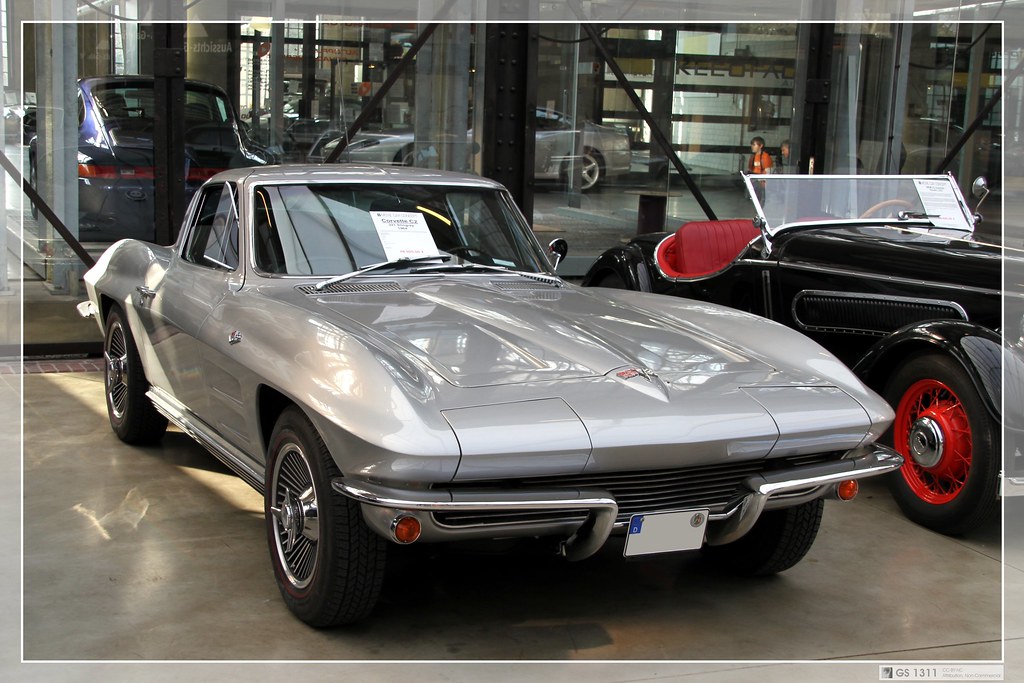
11. **1963 Chevrolet Corvette Sting Ray**Building upon the Corvette’s esteemed legacy as “America’s Sports Car,” the 1963 Chevrolet Corvette Sting Ray marked a pivotal evolution, introducing a design masterpiece that continues to captivate enthusiasts and collectors worldwide. General Motors led much of this innovation, with the Sting Ray featuring a distinctive split rear window design that remains a highly prized and instantly recognizable element. This iteration showcased Detroit’s continuous drive to refine and elevate its high-performance offerings, proving its capability to innovate beyond initial groundbreaking designs.
The early generations of the Corvette were celebrated for their stunning looks, a design philosophy that effortlessly combined elegance with an undeniable sense of athleticism. The Sting Ray further honed this aesthetic, offering an intoxicating mix of refined interiors and powerful engines. It was a car designed not merely for transport but for exhilarating experiences, turning every drive into an event. The meticulous blend of luxury with high performance established the Corvette as a leader, proving American engineering could master both sophisticated comfort and raw, unadulterated power.
For decades, the Chevrolet Corvette has stood as a steadfast symbol of innovation in the automotive world, continually pushing the boundaries of design and engineering. The 1963 Sting Ray, with its unique blend of aggressive styling and sophisticated detailing, reinforced this reputation. It inspired generations of enthusiasts and cemented its status as a quintessential American icon, proudly representing Detroit’s commitment to automotive excellence and proving that America could produce a world-class sports car that was as much a work of art as it was a marvel of engineering.
Car Model Information: 2021 Volkswagen Tiguan 2.0T SE R-Line Black
Name: Chevrolet Corvette (C2)
Caption: 1963 Chevrolet Corvette Sport Coupe
Manufacturer: Chevrolet
Aka: Chevrolet Corvette Sting Ray
Production: August 1962–July 1967
ModelYears: 1963–1967
Platform: Series 0800 (1962-1964),Series 194 (1965-1967)
Chassis: Body-on-frame
Assembly: St. Louis, Missouri
Predecessor: Chevrolet Corvette (C1)
Successor: Chevrolet Corvette (C3)
Class: Sports car
BodyStyle: Convertible (car),coupé
Layout: Front-engine, rear-wheel-drive layout
Engine: {{cvt,327,cuin,L,1,Chevrolet small-block engine#327,V8 engine
Wheelbase: cvt
Length: cvt
Width: cvt
Height: cvt
Weight: cvt
Transmission: manual transmission,manual transmission,Powerglide
Related: Bill Thomas Cheetah
Designer: Larry Shinoda
Categories: 1960s cars, All articles needing additional references, All articles with specifically marked weasel-worded phrases, All articles with unsourced statements, Articles needing additional references from July 2024
Summary: The Chevrolet Corvette (C2) is the second-generation Corvette sports car, produced by the Chevrolet division of General Motors (GM) for the 1963 through 1967 model years.
Get more information about: Chevrolet Corvette (C2)
Buying a high-performing used car >>>
Brand: Chevrolet Model: Corvette Sting Ray
Price: $16,773 Mileage: 68,625 mi.
Read more about: Driving Through History: 10 Stylish and Iconic Cars That Defined the Electrifying 1960s Automotive Landscape

12. **Ford F-Series (Early Generations)**While muscle cars and sports cars captured headlines for their speed and style, another Ford icon quietly defined American utility and strength: the F-Series truck. The F-150, a key model within this lineage, stands as a testament to Detroit’s ability to produce popular models that catered to the diverse needs of the American public, extending beyond passenger vehicles to the essential workhorses that built the nation. These trucks became symbols of American prosperity and innovation in a different, yet equally vital, way.
During Detroit’s golden age, from the late 1940s through the early 1970s, the auto industry flourished, creating vehicles that became integral to the American way of life. The F-Series trucks, with their rugged dependability and robust capabilities, embodied a different facet of American pride – the pride of hard work, reliability, and unparalleled utility. They were, and continue to be, the backbone of countless businesses and farms, demonstrating Detroit’s commitment to supporting the nation’s industry and workforce.
Ford’s contribution with the F-Series exemplified Detroit’s expansive manufacturing prowess, showcasing that the Motor City wasn’t solely focused on speed and luxury, but also on delivering dependable, high-quality vehicles for every segment of the market. These early generations of Ford trucks solidified a legacy of practical innovation and enduring American craftsmanship, further cementing Detroit’s reputation as a multifaceted automotive capital that truly made America proud through both its cars and its essential utility vehicles.
Car Model Information: 2018 Ford F-150 XLT
Name: Ford F-Series
Caption: 2022 Ford F-150 Lariat Luxury
Manufacturer: Ford Motor Company
Aka: Ford Lobo (Mexico, 1992–present)
Production: 1948–present
Class: Pickup truck#Full-size pickup truck
Layout: Front-engine, rear-wheel-drive layout,rear-wheel drive
Predecessor: 1941 Ford
Categories: All-wheel-drive vehicles, All Wikipedia articles written in American English, All articles that may contain original research, All articles with unsourced statements, Articles that may contain original research from September 2020
Summary: The Ford F-Series is a series of light-duty trucks marketed and manufactured by the Ford Motor Company since model year 1948 as a range of full-sized pickup trucks — positioned between Ford’s Ranger and Super Duty pickup trucks. Alongside the F-150 (introduced in 1975), the F-Series also includes the Super Duty series (introduced in 1999), which includes the heavier-duty F-250 through F-450 pickups, F-450/F-550 chassis cabs, and F-600/F-650/F-750 Class 6–8 commercial trucks.
Get more information about: Ford F-Series
Buying a high-performing used car >>>
Brand: Ford Model: F-150
Price: $22,745 Mileage: 70,866 mi.

13. **Chrysler (Early Innovations)**As one of the venerated “Big Three” automakers, Chrysler Corporation played an indispensable role in shaping Detroit’s automotive landscape, distinguishing itself through pioneering engineering and a commitment to technological innovation. Founded by Walter Chrysler in 1925, the company quickly established itself as a formidable player, contributing significantly to the competitive spirit that drove advancements across the entire industry. Chrysler’s early models, though not always singular icons in the same vein as some others, embodied Detroit’s collective spirit of ingenuity.
Chrysler’s contributions were marked by groundbreaking features that enhanced vehicle performance and safety, proving the company’s dedication to pushing automotive boundaries. Innovations like four-wheel hydraulic brakes, which offered superior stopping power, and high-compression engines, which delivered more efficient and potent performance, were hallmarks of their early designs. These advancements were crucial in elevating the standards for American automobiles, directly influencing what consumers came to expect from their vehicles and driving competitors to match or surpass them.
During the 1950s, these three automotive giants—Ford, General Motors, and Chrysler—controlled over 90% of American car production, demonstrating Chrysler’s critical role in this dominance. The competition between them fueled an era of rapid technological innovation and design advancements. Chrysler’s enduring legacy lies in its engineering prowess and its consistent effort to integrate cutting-edge technology, ensuring its place as a cornerstone of Detroit’s golden age and a source of deep pride for the American automotive industry.
Our journey through Detroit’s golden age reveals a rich tapestry of innovation, power, and indelible style. From the roaring muscle cars that dominated the streets to the dependable trucks that built a nation, and the pioneering engineering that set new industry standards, these 13 classics embody the very spirit of American ingenuity. Detroit didn’t just produce cars; it crafted dreams, fostered a vibrant culture, and cemented its legacy as the undisputed automotive capital of the world. These magnificent machines are more than just metal and rubber; they are rolling monuments to a bygone era when American pride rumbled down every highway, leaving an unforgettable mark on history.



